The Big Unfriendly Tech Giants
We must ensure that corporations aren’t able to pick and choose winners and losers in journalism.
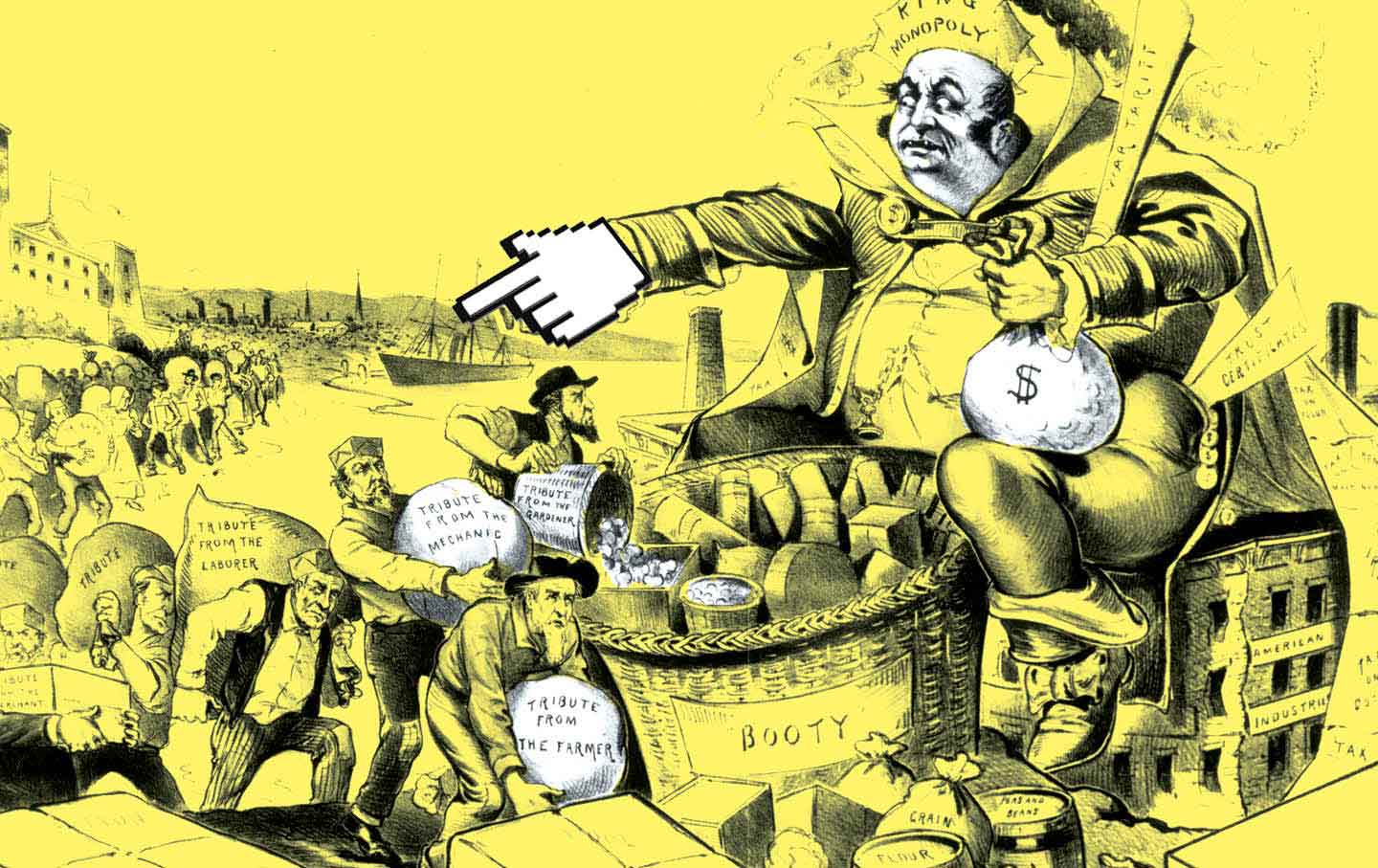
A tiny group of tech companies may be the most dangerous threat to democracy in US history. Google, TikTok, Facebook, Amazon, Twitter, and a few others have seized control of the country’s media infrastructure. And they have decimated the resources of news organizations while reaping profits from their work. A recent blockbuster white paper by four researchers at the Initiative for Policy Dialogue showed that if publishers had the power to negotiate for the value they provide to the platforms, news organizations would get nearly $14 billion from them.
While we have never faced an information crisis of this scale before, we have faced gatekeepers accumulating political power by exploiting their advantages to control producers. In the past, we’ve responded by reaching for the anti-monopoly toolkit: corporate breakups, nondiscrimination rules, and limits on unfair business practices.
These tools—sharpened for the 21st century—still provide some of the most effective ways to dismantle concentrated power. We see one mechanism in the efforts by the Justice Department and the Federal Trade Commission to break the grip of Big Tech over smaller businesses by splitting up tech conglomerates. But there is another, equally important tool: nondiscrimination. Along with breaking up Big Tech, we should ensure that the companies aren’t able to wield their power to choose the winners and losers in journalism.
Nondiscrimination laws are the broad bucket of laws that contain prohibitions on treating different counterparties differently. Network neutrality is a nondiscrimination tool; so too are state laws that require shopping centers to allow political pamphleteers. The Journalism Competition and Preservation Act, recently introduced by Senator Amy Klobuchar (D.-Minn.), is the big nondiscrimination bill that could help save local reporting. The act, which has bipartisan support in the Senate, would forbid platforms from discriminating in negotiations with news organizations based on their size or on the views expressed in their content. Passing this bill is crucial to saving the journalism industry.
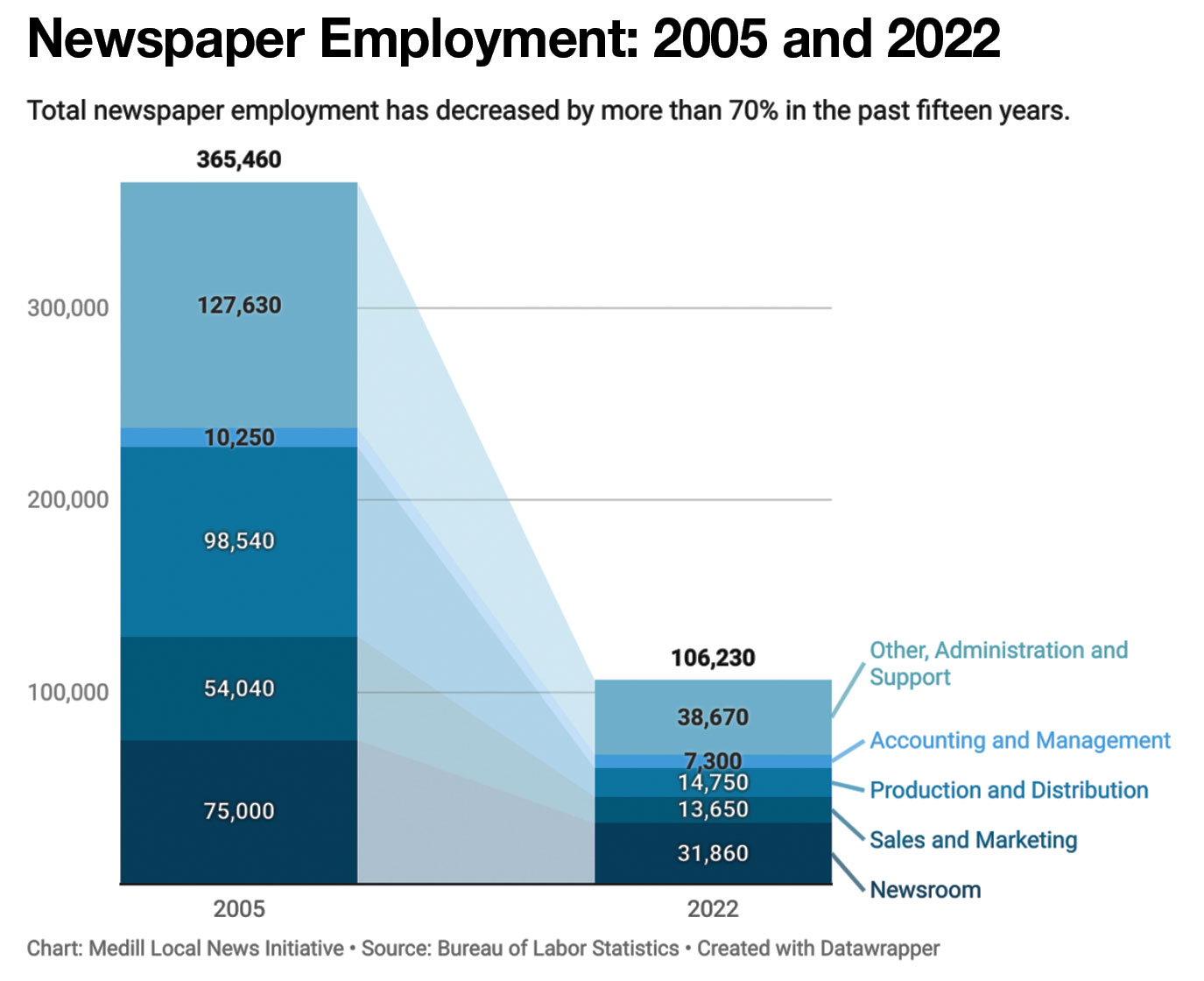
To understand the current crisis, let’s go back to 1833, when the seeds of the popular press that defined American journalism for most of the country’s life were sown. A newspaper called The Sun started showing up on the streets of New York City. It cost a penny (at a time when other papers cost more than a nickel) and covered a wide range of topics—but unlike the fancy financial papers, whose operating expenses were paid for by subscribers, its primary revenue source was ads. As The Sun’s motto put it:
The object of this paper is to lay before the public, at a price within the means of every one, all the news of the day, and at the same time offer an advantageous medium for advertisements.
In essence, the newspaper managed the relationship between readers and merchants, merchants and reporters, and reporters and the public. The dual revenue source—merchants and readers—shaped the content. While subscriber-funded papers tended to cover financial news and elite gossip, The Sun and its variants covered scandals, schools, sports, crime, and accidents. They printed poems, short stories, and commentary, and they covered local political meetings. They hired reporters to watch, dig, and engage. For 180 years, a press offering this mix of cheap news and cheap ads popped up in different incarnations across the country.
These newspapers helped stores sell sewing machines, services, and shampoo—and they connected people through classified ads. (It’s hard for many today to understand how central classified advertising was to American economic life through the 1980s; I’m 51 years old, and I got five jobs, two cars, and four apartments through ads in six different newspapers.) When the Internet came along, Craigslist and a few similar sites made the classifieds irrelevant: Instead of paying a newspaper to list a used car, people listed it for free online. But Craigslist didn’t try to control newspapers, and the basic source of revenue—ads—remained.
Even after Craigslist, advertisers and publishers had direct relationships with local publications and radio stations. Some publishers had greater power than others, and readers of magazines like The Nation would rightly protest when publishers gave individual advertisers favorable coverage. But it would be ludicrous to look at any individual publisher in the 1990s and claim that it exercised significant influence over more than its own corner of the country—at most. While the big TV news shows could lay claim to a national reach, they had no control over what showed up in local papers or on local television, let alone on the multiple local radio stations.
At the same time, the Internet was democratizing news, allowing people to publish and connect with one another and providing unheard-of access to news from all over the world and across the political spectrum. If you didn’t find what you were looking for in your local paper, you could always read the Chicago Tribune or the BBC’s website or, for that matter, Drudge Report or Salon.
And then, in the aughts, social media companies, led by Facebook and Google, began buying up tech firms—by 2010, Google was acquiring companies at a rate of about one business per week. They made themselves essential digital infrastructure for anyone looking to communicate with friends, find jobs, or follow the news. While they called their various components “social media” or “messaging” or “search” or “video sharing,” these features were subsidiary to their core business: digital advertising.
In 2017, Google’s parent company, Alphabet, made $95 billion from selling digital advertising and maintained profit margins above 20 percent, and Facebook made almost $40 billion from digital ads. That year, the two companies accounted for 99 percent of new digital ad sales. Not coincidentally, 2020 also saw 16,160 newsroom jobs disappear.
The more these companies made themselves indispensable as the distributors of news, the more they could charge advertisers. At least a third of American adults regularly get their news from Facebook, a quarter from YouTube (owned by Google), 16 percent from Instagram (owned by Facebook), and 12 percent from X (formerly Twitter).
We’re all familiar with how this works: You’ll see a headline and maybe a sentence of text. The headline links to another site, but few people click on the link to read the actual article. Instead, they will see the headline or pronouncement as part of their news diet, and in this way, ad dollars flow from the headlines and brief descriptions straight to Facebook, Google, and X.
Think of it like a milk distributor. The farmer used to get a significant share of every dollar spent on milk, but now, because only a few distributors control access to the market, the farmers’ cut has shrunk, and they lose their incomes and eventually their farms.
Popular
“swipe left below to view more authors”Swipe →As tech companies extended their reach, they went from being relatively neutral platforms, on which the discovery and sharing of news was possible, to choke points—and then used those choke points for profit. They sorted and delivered the news that was most profitable for them, meaning items that were most likely to generate emotional engagement. And during a 10-year period, they changed strategies constantly, from prioritizing local news to degrading it in favor of family updates. When Facebook turned up the dial on video, many news organizations laid off print journalists and invested in video reporting, only to have Facebook shift strategies again.
For a while, many people thought that the problem wasn’t caused by these platforms; the issue was that the legacy newsprint organizations weren’t nimble enough. Time has given the lie to that story. Even once-fashionable digital outlets like BuzzFeed News, which were created during the era of a more open Internet, have now shuttered.
Communities need political news. They need school-board news and traffic news; they need reporters who understand local budgets and the impacts of federal spending on local life. Democracy cannot survive without local news—and yet we have enabled a business model that destroys it.
While the local “rags” cared about ad revenue, they remained, at heart, news organizations funded by ads—not ad organizations that happened to make money off news. For TikTok and Instagram, journalism is just “content”—one of many ways to keep people online.
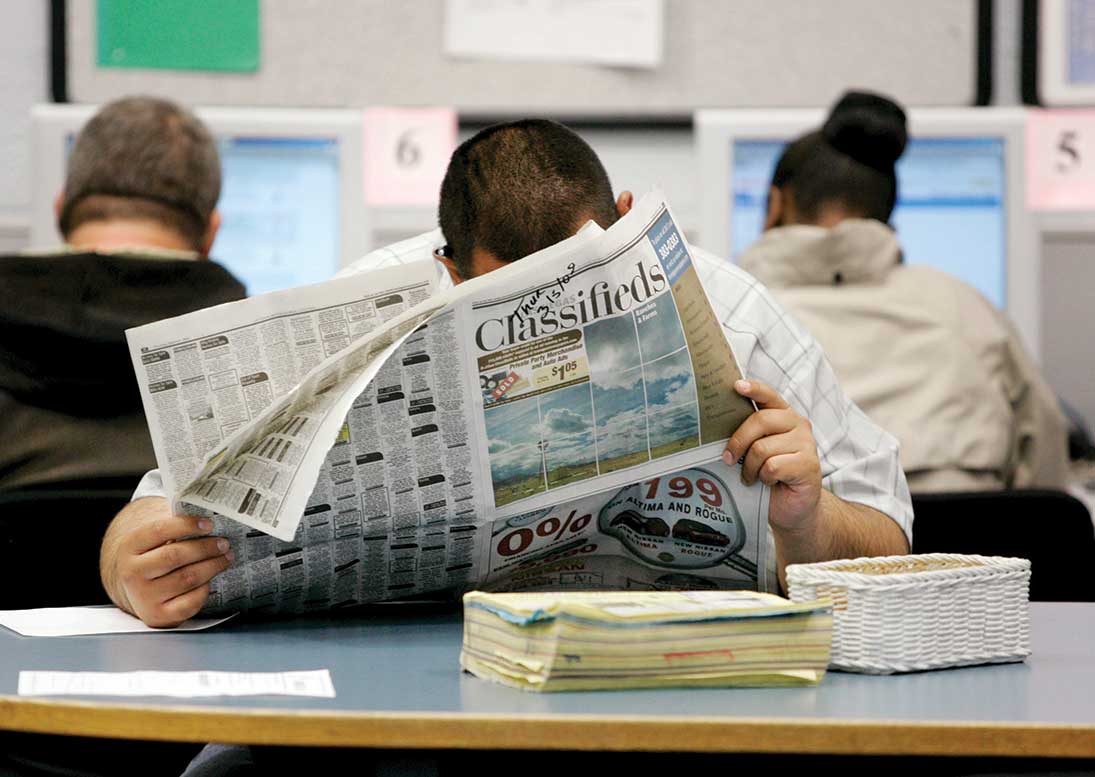
What can we do? Since this is a problem of both concentrated power and a predatory business model, we should make sure that any strategic response speaks to both.
One thing we can learn from the 19th-century anti-monopolists is that we should start thinking about these problems in part through a discrimination lens. As the turn-of-the-century journalist Ida Tarbell reported, you couldn’t go anywhere without hearing debate about how railroads gave different users different rights of access. Tarbell described the public outcry over railroad pricing discrimination this way:
Nothing was commoner, indeed, on the trains which ran the length of the region and were its real forums, than to hear a man explaining that the railways derived their existence and power from the people, that their charters were contracts with the people, that a fundamental provision of these contracts was that there should be no discriminating in favour of one person or one town, that such a discrimination was a violation of charter.
People understood that giving discounts—a mode of discrimination—was a betrayal of the obligations that flowed from the corporate charters granted by states. The anger at discrimination led to the creation of several state and federal laws that limited how railroads and other companies that ran essential infrastructure could treat customers differently.
Six years ago, just before he was hit with a scandal and retired, Senator Al Franken introduced the idea that the media infrastructure problem was a discrimination problem. “As tech giants become a new kind of Internet gatekeeper,” Franken argued, “I believe the same basic principles of… neutrality should apply here: No one company should have the power to pick and choose which content reaches consumers and which doesn’t.” He never drafted a bill along those lines, but with these same principles, we could.
In fact, laws requiring that centralized infrastructure treat all people equally are among the oldest regulations in human society. In the Roman Empire, “just price” laws prevented sellers from charging more based on demand, regardless of how much buyers would pay when the conditions allowed it. (Ferrymen, according to legend, could not enact surge pricing on the Tiber!)
These kinds of regulations have been especially important in communications infrastructure. Nondiscrimination rules are at the center of the early laws governing the post office. Since the Postal Service Act of 1792, the post office has had a core obligation of equal access. The Atlantic Cable Act, passed by Congress in March 1857, required Great Britain to agree on the “equality of rights among the citizens of the United States in the use of said communication and the lines of telegraph.” The Mann-Elkins Act of 1910 extended the basic premise of nondiscrimination to the telegraph, telephone, and wireless industries.
Antidiscrimination rules have governed each new revolutionary technology to protect the public from corporations seeking to use these technologies to become despotic gatekeepers. The principle of equal access came to define and then govern all the developments in information infrastructure—until now.
Media Special Issue
I’m sure we’ll hear that antidiscrimination rules will hurt innovation, but history suggests the opposite: Antidiscrimination enabled a thriving communications ecosystem free of centralized power, general dependency, and fear.
A nondiscrimination rule, as applied to platforms, could take several forms. It could mean a rule that companies cannot discriminate based on the viewpoints of the content they’re required to carry. There is no law prohibiting tech firms from manipulating their platforms for their owner’s ideological or political ends—say, right before an election or during a critical moment of political debate. Google and Facebook, for example, can suppress debates on corporate taxes, and publishers will take note and generate fewer articles on such policies. TikTok—owned by a Chinese company over which the Chinese state has veto power—can easily amplify voices that serve the interests of the Chinese government and hide those that are more critical.
In today’s climate, a nondiscrimination principle for speech on tech platforms is often seen as a right-wing idea. But Democrats and progressives have a chilling example of what the right to freely discriminate means: Elon Musk. When Musk bought Twitter, he made more users see his favorite projects (and his own tweets) and suppressed voices with which he disagreed. He turned the platform into his megaphone.
What would such a nondiscrimination law look like in practice? The America Online Choice and Innovation Act, another bill by Klobuchar, would ban platforms like Google, Amazon, and Apple from discriminating “in the application or enforcement of the terms of service…among similarly situated business users in a manner that would materially harm competition.” They can still engage in content moderation, but they can’t use discrimination to exploit their dominant position.
To be clear, nondiscrimination is insufficient. We should still separate the ownership of social media from other components like messaging and slow down the merger mania so that Big Tech can’t keep buying empires through acquisitions. There’s also the other part of the problem that needs to be solved: a predatory business model. Klobuchar’s Journalism Competition and Preservation Act—which made it through committee with bipartisan support but never saw a floor vote—would give small news organizations (those with less than 1,500 employees) the right to collectively bargain and negotiate with Big Tech, thereby allowing local news organizations to stand up to the technological bullies.
In other words, to protect democracy for the rest of us, we need a lot more antitrust actions against the Goliaths—and an antitrust exemption for the Davids.
More from The Nation

No, Kamala Harris Staffers Did Not Run a “Flawless” Campaign No, Kamala Harris Staffers Did Not Run a “Flawless” Campaign
Democratic strategists are still patting themselves on the back for a catastrophic defeat.

Why Bidenomics Was Such a Bust Why Bidenomics Was Such a Bust
A large majority of voters gave the Biden administration a failing grade on the economy. For the sake of future policy battles, it is worthwhile to try to understand their reasons...

At CPAC Argentina, a Preview of Donald Trump’s Second Term At CPAC Argentina, a Preview of Donald Trump’s Second Term
A far-right international extending from Lara Trump and Steve Bannon to Jair Bolsonaro and Javier Milei joined reactionaries across Europe to promise no safe quarter for the left....
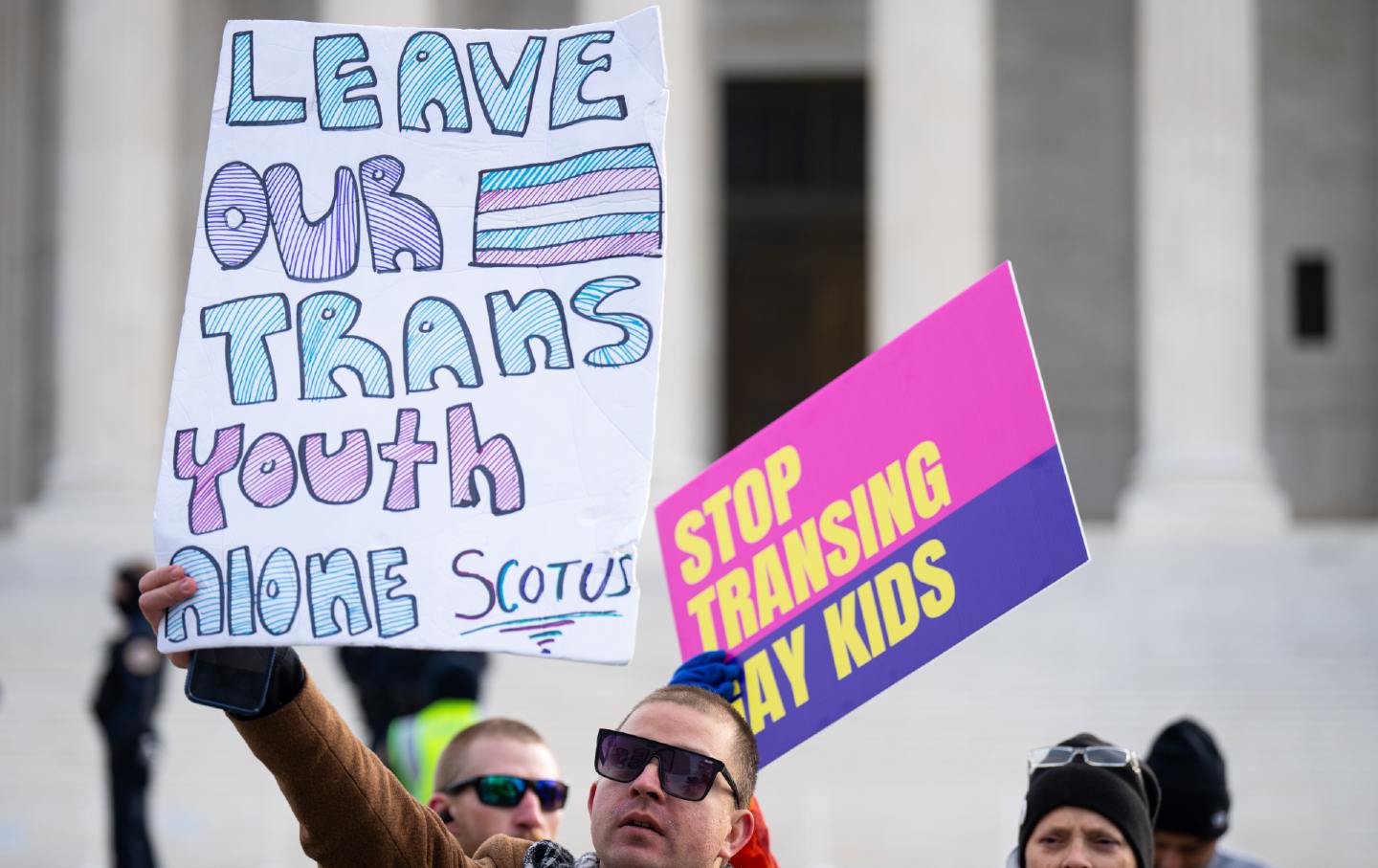
Trans Medicine’s “Merchants of Doubt” Trans Medicine’s “Merchants of Doubt”
There is plenty of uncertainty involved in gender-affirming care—as in most aspects of medicine. But the groups behind the Tennessee ban aren’t driven by science—or patient care.
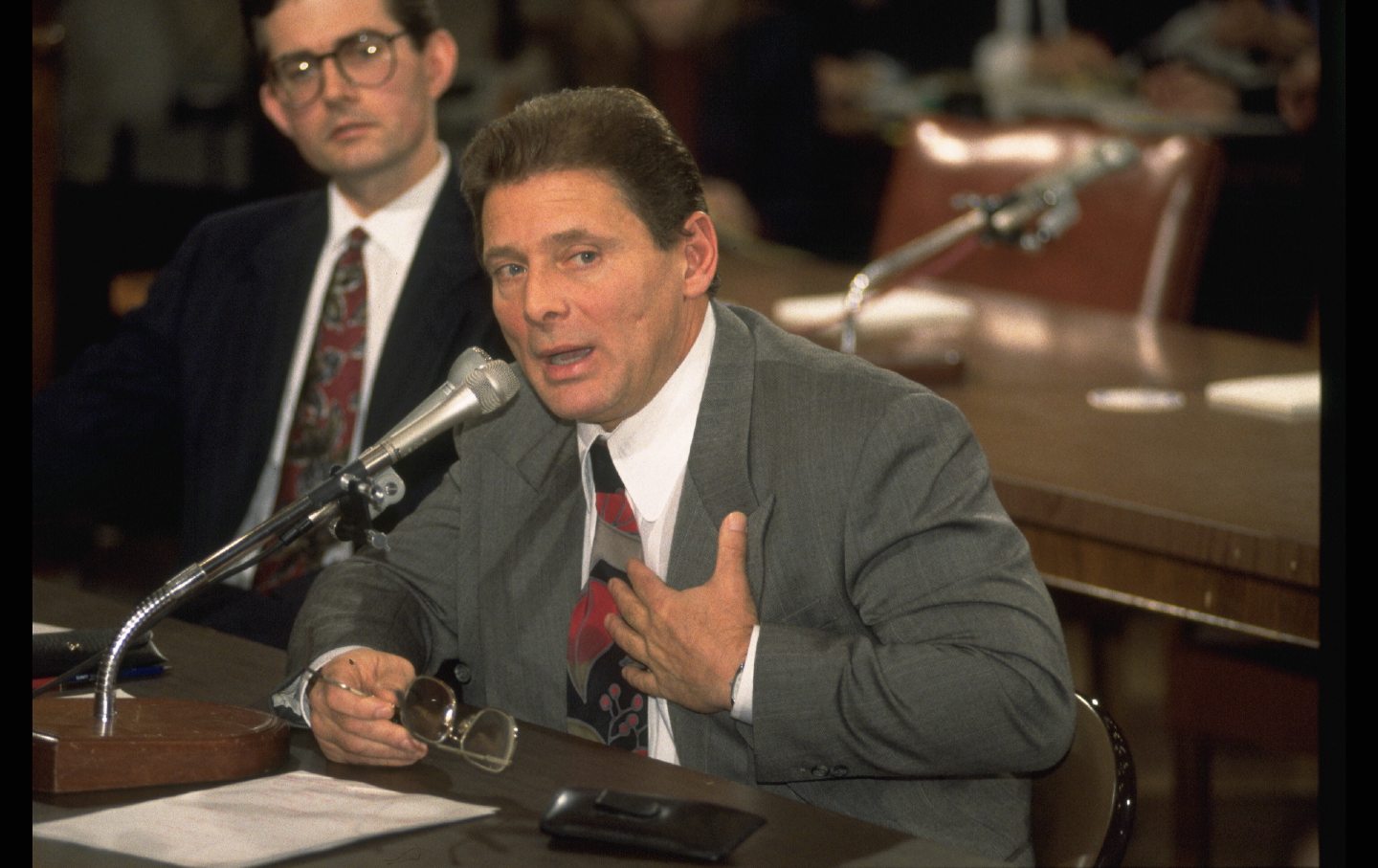
Donald Trump’s Government of Gangsters Donald Trump’s Government of Gangsters
Who is being naïve now?



